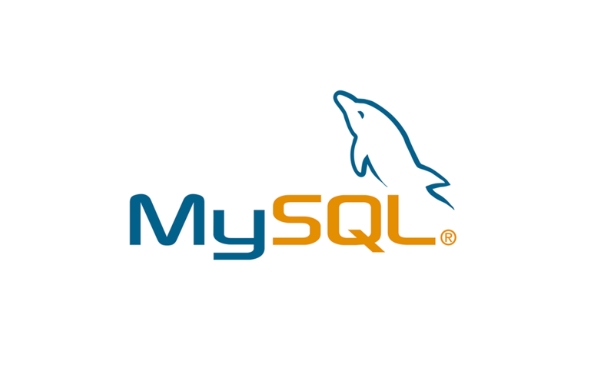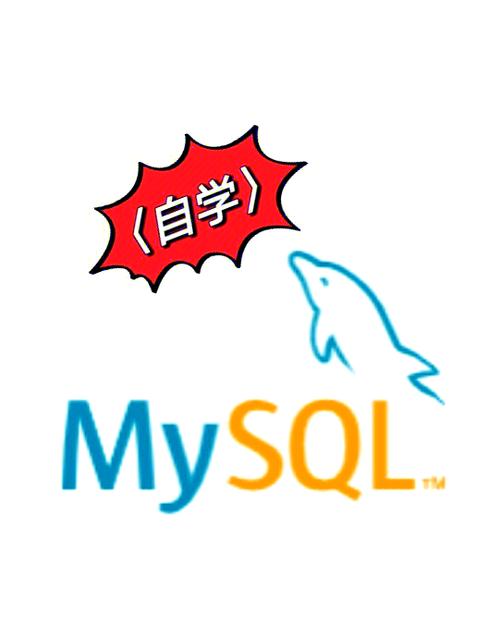python中操作mysql的pymysql模块详解
来源:SegmentFault
2023-02-24 21:33:15
0浏览
收藏
有志者,事竟成!如果你在学习数据库,那么本文《python中操作mysql的pymysql模块详解》,就很适合你!文章讲解的知识点主要包括MySQL、python、pymysql,若是你对本文感兴趣,或者是想搞懂其中某个知识点,就请你继续往下看吧~
简述
pymsql是Python中操作MySQL的模块,其使用方法和MySQLdb几乎相同。但目前pymysql支持python3.x而后者不支持3.x版本。
本文测试python版本:3.5.2。mysql版本:5.7.18
一、安装
pip install pymysql
二、使用操作
1. 执行SQL
#!/usr/bin/env python
# _*_ coding:utf-8 _*_
__author__ = 'junxi'
import pymysql
# 创建连接
conn = pymysql.connect(host='127.0.0.1', port=3306, user='blog', passwd='123456', db='blog', charset='utf8')
# 创建游标, 查询数据默认为元组类型
cursor = conn.cursor()
# 执行SQL,并返回收影响行数
row1 = cursor.execute("update users set password = '123'")
print(row1)
# 执行SQL,并返回受影响行数
row2 = cursor.execute("update users set password = '456' where id > %s", (1,))
print(row2)
# 执行SQL,并返回受影响行数(使用pymysql的参数化语句防止SQL注入)
row3 = cursor.executemany("insert into users(username, password, email)values(%s, %s, %s)", [("ceshi3", '333', 'ceshi3@11.com'), ("ceshi4", '444', 'ceshi4@qq.com')])
print(row3)
# 提交,不然无法保存新建或者修改的数据
conn.commit()
# 关闭游标
cursor.close()
# 关闭连接
conn.close()
提示:存在中文的时候,连接需要添加charset='utf8',否则中文显示乱码。
2、获取查询数据
#!/usr/bin/env python
# _*_ coding:utf-8 _*_
__author__ = 'junxi'
import pymysql
# 创建连接
conn = pymysql.connect(host='127.0.0.1', port=3306, user='blog', passwd='123456', db='blog', charset='utf8')
# 创建游标, 查询数据默认为元组类型
cursor = conn.cursor()
cursor.execute("select * from users")
# 获取第一行数据
row_1 = cursor.fetchone()
print(row_1)
# 获取前n行数据
row_n = cursor.fetchmany(3)
print(row_n)
# 获取所有数据
row_3 = cursor.fetchall()
print(row_3)
# 提交,不然无法保存新建或者修改的数据
conn.commit()
# 关闭游标
cursor.close()
# 关闭连接
conn.close()
3、获取新创建数据自增ID
可以获取到最新自增的ID,也就是最后插入的一条数据ID
#!/usr/bin/env python
# _*_ coding:utf-8 _*_
__author__ = 'junxi'
import pymysql
# 创建连接
conn = pymysql.connect(host='127.0.0.1', port=3306, user='blog', passwd='123456', db='blog', charset='utf8')
# 创建游标, 查询数据默认为元组类型
cursor = conn.cursor()
cursor.executemany("insert into users(username, password, email)values(%s, %s, %s)", [("ceshi3", '333', 'ceshi3@11.com'), ("ceshi4", '444', 'ceshi4@qq.com')])
new_id = cursor.lastrowid
print(new_id)
# 提交,不然无法保存新建或者修改的数据
conn.commit()
# 关闭游标
cursor.close()
# 关闭连接
conn.close()
4、移动游标
操作都是靠游标,那对游标的控制也是必须的
注:在fetch数据时按照顺序进行,可以使用cursor.scroll(num,mode)来移动游标位置,如: cursor.scroll(1,mode='relative') # 相对当前位置移动 cursor.scroll(2,mode='absolute') # 相对绝对位置移动
5、fetch数据类型
关于默认获取的数据是元组类型,如果想要或者字典类型的数据,即:
import pymysql
# 创建连接
conn = pymysql.connect(host='127.0.0.1', port=3306, user='blog', passwd='123456', db='blog', charset='utf8')
# 游标设置为字典类型
cursor = conn.cursor(cursor=pymysql.cursors.DictCursor)
# 左连接查询
r = cursor.execute("select * from users as u left join articles as a on u.id = a.user_id where a.user_id = 2")
result = cursor.fetchall()
print(result)
# 查询一个表的所有字段名
c = cursor.execute("SHOW FULL COLUMNS FROM users FROM blog")
cc = cursor.fetchall()
# 提交,不然无法保存新建或者修改的数据
conn.commit()
# 关闭游标
cursor.close()
# 关闭连接
conn.close()
查看运行结果:
[{'user_id': 2, 'id': 2, 'password': '456', 'email': 'xinlei2017@test.com', 'a.id': 2, 'content': '成名之路', 'title': '星光大道', 'username': 'tangtang'}]
6、调用存储过程
a、调用无参存储过程
#! /usr/bin/env python
# -*- coding:utf-8 -*-
import pymysql
conn = pymysql.connect(host='127.0.0.1', port=3306, user='blog', passwd='123456', db='blog', charset='utf8')
#游标设置为字典类型
cursor = conn.cursor(cursor=pymysql.cursors.DictCursor)
#无参数存储过程
cursor.callproc('p2') #等价于cursor.execute("call p2()")
row_1 = cursor.fetchone()
print row_1
conn.commit()
cursor.close()
conn.close()
b、调用有参存储过程
#! /usr/bin/env python
# -*- coding:utf-8 -*-
import pymysql
conn = pymysql.connect(host='127.0.0.1', port=3306, user='blog', passwd='123456', db='blog', charset='utf8')
cursor = conn.cursor(cursor=pymysql.cursors.DictCursor)
cursor.callproc('p1', args=(1, 22, 3, 4))
#获取执行完存储的参数,参数@开头
cursor.execute("select @p1,@_p1_1,@_p1_2,@_p1_3")
# {u'@_p1_1': 22, u'@p1': None, u'@_p1_2': 103, u'@_p1_3': 24}
row_1 = cursor.fetchone()
print row_1
conn.commit()
cursor.close()
conn.close()
三、关于pymysql防注入
1、字符串拼接查询,造成注入
正常查询语句:
#! /usr/bin/env python # -*- coding:utf-8 -*- import pymysql conn = pymysql.connect(host='127.0.0.1', port=3306, user='blog', passwd='123456', db='blog', charset='utf8') cursor = conn.cursor() username = "ceshi1" password = "ceshi1passwd" # 正常构造语句的情况 sql = "select username, password from users where user='%s' and pass='%s'" % (username, password) # sql = select username, password from users where user='ceshi1' and pass='ceshi1passwd' row_count = cursor.execute(sql) row_1 = cursor.fetchone() print row_count, row_1 conn.commit() cursor.close() conn.close()
构造注入语句:
#! /usr/bin/env python # -*- coding:utf-8 -*- import pymysql conn = pymysql.connect(host='127.0.0.1', port=3306, user='blog', passwd='123456', db='blog', charset='utf8') cursor = conn.cursor() username = "u1' or '1'-- " password = "u1pass" sql="select username, password from users where username='%s' and password='%s'" % (username, password) # 拼接语句被构造成下面这样,永真条件,此时就注入成功了。因此要避免这种情况需使用pymysql提供的参数化查询。 # select user,pass from tb7 where user='u1' or '1'-- ' and pass='u1pass' row_count = cursor.execute(sql) row_1 = cursor.fetchone() print row_count,row_1 conn.commit() cursor.close() conn.close()
2、避免注入,使用pymysql提供的参数化语句
正常参数化查询
#! /usr/bin/env python
# -*- coding:utf-8 -*-
import pymysql
conn = pymysql.connect(host='127.0.0.1', port=3306, user='blog', passwd='123456', db='blog', charset='utf8')
cursor = conn.cursor()
username="u1"
password="u1pass"
#执行参数化查询
row_count=cursor.execute("select username,password from tb7 where username=%s and password=%s",(username,password))
row_1 = cursor.fetchone()
print row_count,row_1
conn.commit()
cursor.close()
conn.close()
构造注入,参数化查询注入失败。
#! /usr/bin/env python
# -*- coding:utf-8 -*-
import pymysql
conn = pymysql.connect(host='127.0.0.1', port=3306, user='blog', passwd='123456', db='blog', charset='utf8')
cursor = conn.cursor()
username="u1' or '1'-- "
password="u1pass"
#执行参数化查询
row_count=cursor.execute("select username,password from users where username=%s and password=%s",(username,password))
#内部执行参数化生成的SQL语句,对特殊字符进行了加\转义,避免注入语句生成。
# sql=cursor.mogrify("select username,password from users where username=%s and password=%s",(username,password))
# print sql
#select username,password from users where username='u1\' or \'1\'-- ' and password='u1pass'被转义的语句。
row_1 = cursor.fetchone()
print row_count,row_1
conn.commit()
cursor.close()
conn.close()
结论:excute执行SQL语句的时候,必须使用参数化的方式,否则必然产生SQL注入漏洞。
3、使用存mysql储过程动态执行SQL防注入
使用MYSQL存储过程自动提供防注入,动态传入SQL到存储过程执行语句。
delimiter \\
DROP PROCEDURE IF EXISTS proc_sql \\
CREATE PROCEDURE proc_sql (
in nid1 INT,
in nid2 INT,
in callsql VARCHAR(255)
)
BEGIN
set @nid1 = nid1;
set @nid2 = nid2;
set @callsql = callsql;
PREPARE myprod FROM @callsql;
-- PREPARE prod FROM 'select * from users where nid>? and nid'; 传入的值为字符串,?为占位符
-- 用@p1,和@p2填充占位符
EXECUTE myprod USING @nid1,@nid2;
DEALLOCATE prepare myprod;
END\\
delimiter ;
set @nid1=12;
set @nid2=15;
set @callsql = 'select * from users where nid>? and nid';
CALL proc_sql(@nid1,@nid2,@callsql)
pymsql中调用
#! /usr/bin/env python
# -*- coding:utf-8 -*-
import pymysql
conn = pymysql.connect(host='127.0.0.1', port=3306, user='blog', passwd='123456', db='blog', charset='utf8')
cursor = conn.cursor()
sql1="select * from users where nid>? and nid"
cursor.callproc('proc_sql', args=(11, 15, sql1))
rows = cursor.fetchall()
print rows
conn.commit()
cursor.close()
conn.close()
四、使用with简化连接过程
# 使用with简化连接过程,每次都连接关闭很麻烦,使用上下文管理,简化连接过程
import pymysql
import contextlib
# 定义上下文管理器,连接后自动关闭连接
@contextlib.contextmanager
def mysql(host='127.0.0.1', port=3306, user='blog', passwd='123456', db='blog', charset='utf8'):
conn = pymysql.connect(host=host, port=port, user=user, passwd=passwd, db=db, charset=charset)
cursor = conn.cursor(cursor=pymysql.cursors.DictCursor)
try:
yield cursor
finally:
conn.commit()
cursor.close()
conn.close()
# 执行sql
with mysql() as cursor:
# 左连接查询
r = cursor.execute("select * from users as u left join articles as a on u.id = a.user_id where a.user_id = 2")
result = cursor.fetchall()
print(result)
查看运行结果:
[{'title': '星光大道', 'username': 'tangtang', 'user_id': 2, 'email': 'xinlei3166@126.com', 'a.id': 2, 'content': '成名之路', 'password': '456', 'id': 2}]以上就是本文的全部内容了,是否有顺利帮助你解决问题?若是能给你带来学习上的帮助,请大家多多支持golang学习网!更多关于数据库的相关知识,也可关注golang学习网公众号。
版本声明
本文转载于:SegmentFault 如有侵犯,请联系study_golang@163.com删除
 无需加配!1核1G小服务器也能跑mysql8.0
无需加配!1核1G小服务器也能跑mysql8.0
- 上一篇
- 无需加配!1核1G小服务器也能跑mysql8.0

- 下一篇
- PHP脚本导出MySQL数据字典
查看更多
最新文章
-

- 数据库 · MySQL | 1天前 |
- MySQL数值函数大全及使用技巧
- 117浏览 收藏
-

- 数据库 · MySQL | 2天前 |
- 三种登录MySQL方法详解
- 411浏览 收藏
-

- 数据库 · MySQL | 3天前 |
- MySQL数据备份方法与工具推荐
- 420浏览 收藏
-

- 数据库 · MySQL | 3天前 |
- MySQL数据备份方法与工具推荐
- 264浏览 收藏
-

- 数据库 · MySQL | 4天前 |
- MySQL索引的作用是什么?
- 266浏览 收藏
-

- 数据库 · MySQL | 5天前 |
- MySQL排序原理与实战应用
- 392浏览 收藏
-

- 数据库 · MySQL | 1星期前 |
- MySQLwhere条件查询技巧
- 333浏览 收藏
-

- 数据库 · MySQL | 1星期前 |
- MySQL常用数据类型有哪些?怎么选更合适?
- 234浏览 收藏
-

- 数据库 · MySQL | 1星期前 |
- MySQL常用命令大全管理员必学30条
- 448浏览 收藏
-

- 数据库 · MySQL | 1星期前 |
- MySQL高效批量插入数据方法大全
- 416浏览 收藏
-

- 数据库 · MySQL | 1星期前 |
- MySQL性能优化技巧大全
- 225浏览 收藏
-

- 数据库 · MySQL | 1星期前 |
- MySQL数据备份4种方法保障安全
- 145浏览 收藏
查看更多
课程推荐
-

- 前端进阶之JavaScript设计模式
- 设计模式是开发人员在软件开发过程中面临一般问题时的解决方案,代表了最佳的实践。本课程的主打内容包括JS常见设计模式以及具体应用场景,打造一站式知识长龙服务,适合有JS基础的同学学习。
- 543次学习
-

- GO语言核心编程课程
- 本课程采用真实案例,全面具体可落地,从理论到实践,一步一步将GO核心编程技术、编程思想、底层实现融会贯通,使学习者贴近时代脉搏,做IT互联网时代的弄潮儿。
- 516次学习
-

- 简单聊聊mysql8与网络通信
- 如有问题加微信:Le-studyg;在课程中,我们将首先介绍MySQL8的新特性,包括性能优化、安全增强、新数据类型等,帮助学生快速熟悉MySQL8的最新功能。接着,我们将深入解析MySQL的网络通信机制,包括协议、连接管理、数据传输等,让
- 500次学习
-

- JavaScript正则表达式基础与实战
- 在任何一门编程语言中,正则表达式,都是一项重要的知识,它提供了高效的字符串匹配与捕获机制,可以极大的简化程序设计。
- 487次学习
-

- 从零制作响应式网站—Grid布局
- 本系列教程将展示从零制作一个假想的网络科技公司官网,分为导航,轮播,关于我们,成功案例,服务流程,团队介绍,数据部分,公司动态,底部信息等内容区块。网站整体采用CSSGrid布局,支持响应式,有流畅过渡和展现动画。
- 485次学习
查看更多
AI推荐
-

- ChatExcel酷表
- ChatExcel酷表是由北京大学团队打造的Excel聊天机器人,用自然语言操控表格,简化数据处理,告别繁琐操作,提升工作效率!适用于学生、上班族及政府人员。
- 3164次使用
-

- Any绘本
- 探索Any绘本(anypicturebook.com/zh),一款开源免费的AI绘本创作工具,基于Google Gemini与Flux AI模型,让您轻松创作个性化绘本。适用于家庭、教育、创作等多种场景,零门槛,高自由度,技术透明,本地可控。
- 3376次使用
-

- 可赞AI
- 可赞AI,AI驱动的办公可视化智能工具,助您轻松实现文本与可视化元素高效转化。无论是智能文档生成、多格式文本解析,还是一键生成专业图表、脑图、知识卡片,可赞AI都能让信息处理更清晰高效。覆盖数据汇报、会议纪要、内容营销等全场景,大幅提升办公效率,降低专业门槛,是您提升工作效率的得力助手。
- 3405次使用
-

- 星月写作
- 星月写作是国内首款聚焦中文网络小说创作的AI辅助工具,解决网文作者从构思到变现的全流程痛点。AI扫榜、专属模板、全链路适配,助力新人快速上手,资深作者效率倍增。
- 4509次使用
-

- MagicLight
- MagicLight.ai是全球首款叙事驱动型AI动画视频创作平台,专注于解决从故事想法到完整动画的全流程痛点。它通过自研AI模型,保障角色、风格、场景高度一致性,让零动画经验者也能高效产出专业级叙事内容。广泛适用于独立创作者、动画工作室、教育机构及企业营销,助您轻松实现创意落地与商业化。
- 3785次使用
查看更多
相关文章
-
- golang MySQL实现对数据库表存储获取操作示例
- 2022-12-22 499浏览
-
- 搞一个自娱自乐的博客(二) 架构搭建
- 2023-02-16 244浏览
-
- B-Tree、B+Tree以及B-link Tree
- 2023-01-19 235浏览
-
- mysql面试题
- 2023-01-17 157浏览
-
- MySQL数据表简单查询
- 2023-01-10 101浏览



